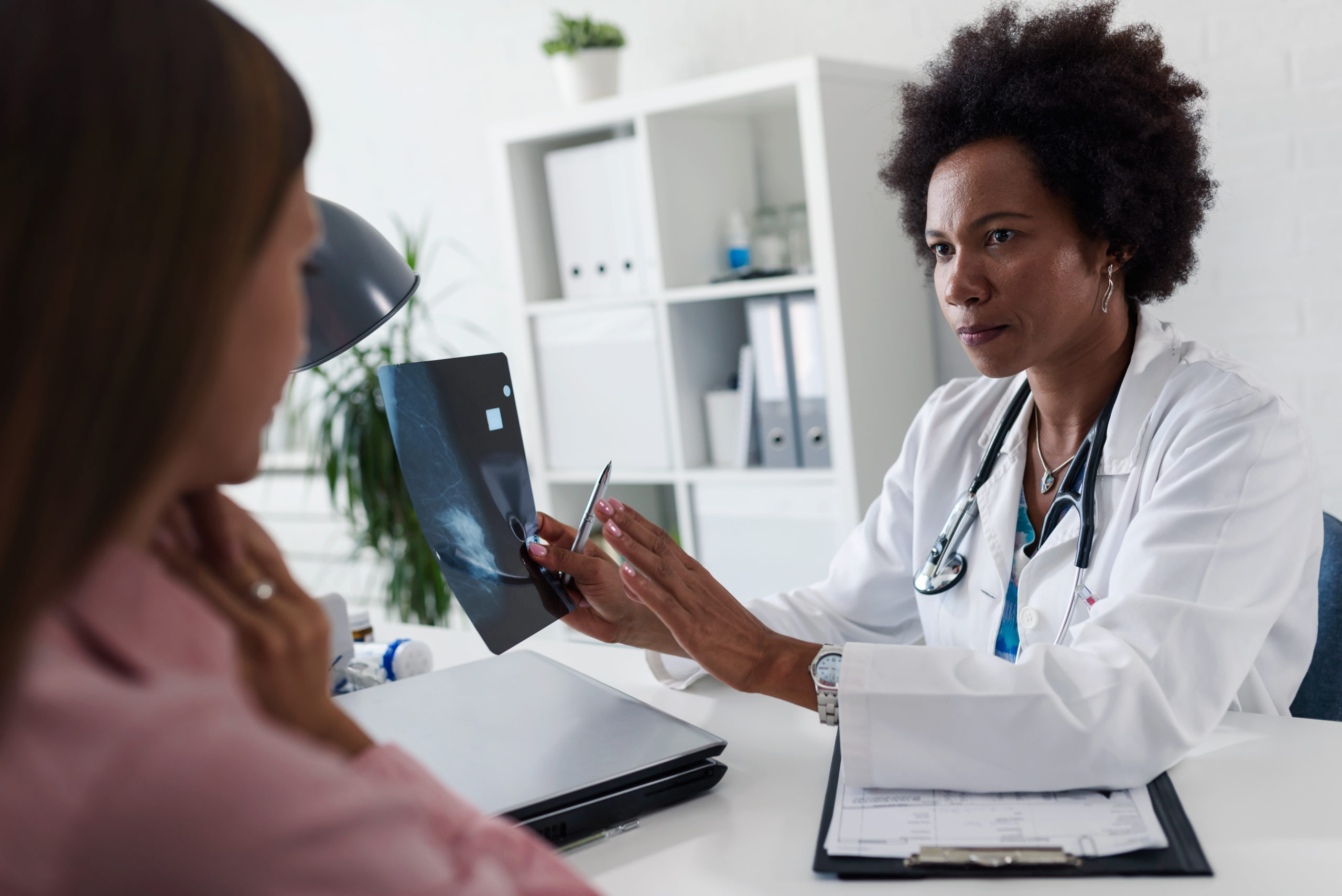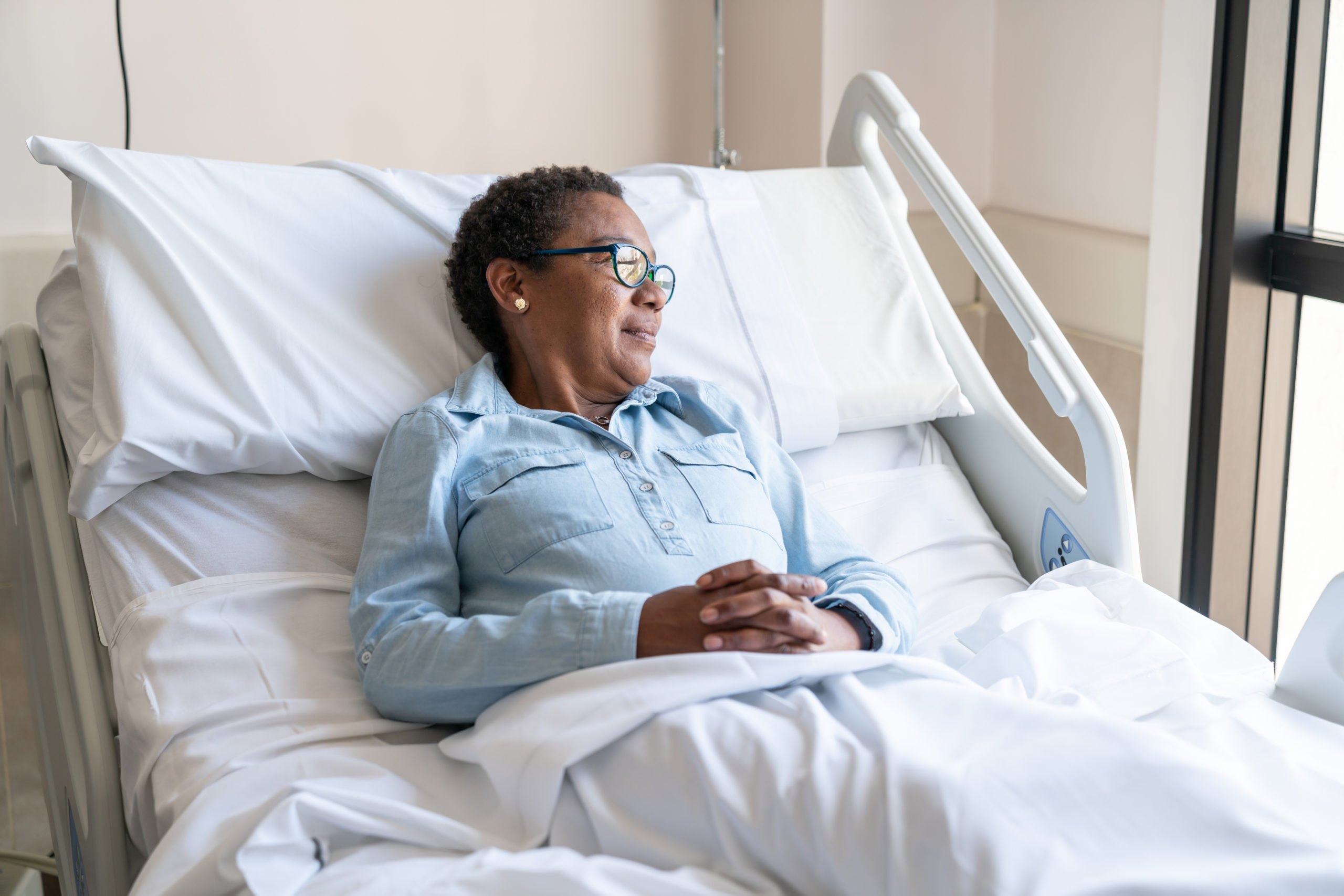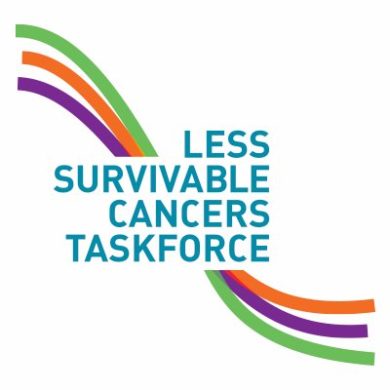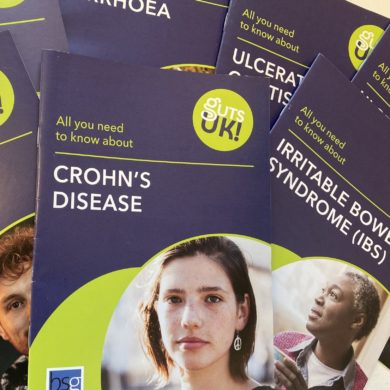Stomach Cancer
Download printable versionOverview
What is the stomach?
The stomach is a hollow, muscular organ found in the upper part of the abdomen. Its main purpose is to act as a reservoir for the food and drink that we consume. It also produces acid and enzymes to help the digestion process.
The cells lining the stomach are constantly being replaced by a new layer of cells as the old cells wear out. For most people this process happens with no problems. However, in a small number of people, the cell reproduction process goes out of control and this can lead to abnormal cells being formed. These abnormal cells can sometimes turn cancerous.
The most common type of cancer that is found in the inside lining of the stomach is called an adenocarcinoma. There are other rarer types of cancer found in the stomach, such as gastrointestinal stromal tumours (GISTs), MALT lymphomas and neuroendocrine (previously known as carcinoid) tumours. However, this information is about adenocarcinoma of the stomach.
Stomach Cancer:
Every year about 6,700 people in the UK are diagnosed with stomach cancer. This is a rate of approximately 1 person in every 10,000 people, which is defined medically as a rare disease. Sadly, stomach cancer is often diagnosed late, when the cancer is advanced and little curative treatment is available.
Stomach cancer is more common in people over 45 years of age and indeed, about 1 in 2 people diagnosed are over the age of 75 years. It is also more commonly diagnosed in men than women. Gastric cancer is the 16th most common cancer in the UK, although the number of people diagnosed with stomach cancer in the UK has been declining in recent years.
People of non-Caucasian ethnic background have an increased risk of developing stomach cancer. Also, Korean and Chinese subjects too have an increased risk, which is suspected to be related to familial genetic causes and Helicobacter pylori infection.

Causes
Causes of cancer of the stomach:
Helicobacter pylori (H. pylori or Helicobacter): This is a bacterium that is the most common cause of a chronic stomach infection. It can lead to an increased risk of developing stomach cancer in some people. At least 4 in 10 stomach cancers are caused by Helicobacter infection. Helicobacter can cause an inflammatory condition called chronic atrophic gastritis, which can increase the risk in some people of developing stomach cancer.
Inflammation of the stomach lining: Atrophic gastritis, causes an inflammatory change to the stomach lining. One cause is H. pylori infection (see above). The second is an autoimmune condition called pernicious anaemia. This type of anaemia also results in a lack of vitamin B12 due to changes in the stomach cells causing problems with the blood.
Having an unhealthy body weight: Having an unhealthy weight, particularly a body mass index (BMI) of over 30 kg/m carries an increased risk of developing stomach cancer. This can occur at the top part of the stomach (called the cardia) as well as cancers between the stomach and the gullet or the gastro-oesophageal junction, this is at the top of the stomach. 5 in 100 stomach cancers are reported to occur in people who have a high BMI.
Diet: Not consuming adequate amounts of fruit and vegetables or eating a diet high in salt can also increase the risk of developing stomach cancer and this cancer is also associated with a higher intake of red – and particularly smoked – meat products (which are higher in salt).
Gastro-oesophageal reflux disease (GORD): People who have severe acid reflux over a long time, might have an increased risk of developing stomach cancer in the cardia region but also oesophageal cancer.

Stomach surgery: Some types of previous stomach surgery may result in less stomach acid being produced, and this may also lead to an increased risk of stomach cancer.
Family history: People who have close family members (brother, sister or parent) with stomach cancer, have a higher-than-average risk of developing stomach cancer themselves. This is possibly due to eating a similar diet, having an infection with the H. pylori bacterium, or possibly sharing the same genetic background.
Some people with a strong family and genetic risk of stomach cancer, can develop it at a younger age, that is earlier than 50.
Smoking : Smoking tobacco increases the risk of developing several types of cancer, including cancer of the stomach and the risk increases with the number of cigarettes smoked. 1 in 5 stomach cancers are reported to be related to smoking.
Alcohol consumption: Alcohol has been reported to increase the risk of stomach cancer in some studies, although the risk was felt to be conflicting in others. This means that data has shown differences between research, so the answer as to whether alcohol intake increases the risk of stomach cancer remains unknown, however, it is best to moderate alcohol intake to within healthy guidelines as high alcohol intake can result in other damaging effects on health.
Symptoms
What are the usual symptoms?
The symptoms of stomach cancer can include:
- Persistent indigestion.
- Upper abdominal pain or discomfort.
- Feeling full after eating smaller amounts of food.
- Feeling sick (nausea).
- Being sick (vomiting).
- Difficulty swallowing.
- Weight loss.
- Some people can also find they burp a lot.
- Stomach cancers can also bleed, resulting in dark or black poo (or stools) or vomiting blood.
- Some people may have anaemic symptoms before diagnosis or may be found to be anaemic when they are diagnosed.
Indigestion and feeling full are very common digestive symptoms, but in most cases are not due to stomach cancer. However, if you have been experiencing symptoms that do not go away – along with weight loss – it is best to see your doctor to ensure that a diagnosis of cancer is ruled out. For most people with these symptoms though, stomach cancer will not be diagnosed.
So, if you have had unexplained symptoms for 3 weeks or more and your symptoms continue, it is recommended that you see your doctor.
How is stomach cancer diagnosed?
Blood tests: There are no specific blood tests to diagnose stomach cancer. Some blood tests like CEA and CA 19-9 can suggest a digestive system cancer but they are not specific for stomach cancer. The above tests can also identify other medical conditions and may wrongly indicate that cancer is not present in some people who do in fact have cancer. This means that other means of investigation should be undertaken if stomach cancer is suspected. Sometimes people have anaemia which can be measured by a full blood count test.
Endoscopy: This is where a camera attached to a thin tube is inserted into the mouth and down to the stomach to allow the doctor to have a look inside, your doctor may take small tissue samples (biopsies) to test for cancer.
Endoscopic ultrasound: This is a test using the camera mentioned above but it also allows the doctor to scan the stomach and help find the size of the cancer and whether it has spread further from the stomach.
A CT or MRI: scan might be done to find out whether the stomach cancer is advanced or not and if it has spread to other organs like lymph nodes, liver or lung. This is sometimes combined with another type of scan called a PET-CT scan. A PET-CT scan detects cancer cells following a radioactive injection that shows where the cancer is located inside the body.

Treatment
What treatment is available for stomach cancer?
Treatment consists of surgery and chemotherapy, very occasionally chemotherapy is combined with radiotherapy.
Treatment when the cancer is curable:
Chemotherapy may be given before surgery if the cancer is felt to be curable to reduce the size of the cancer (this is called neo-adjuvant chemotherapy). This can sometimes mean that even larger cancers might be able to be treated with surgery.
Endoscopic mucosal resection (EMR) and endoscopic submucosal dissection (ESD): This treatment might be considered if the cancer is diagnosed early and it has not progressed beyond the most superficial layers of the stomach wall. This treatment is conducted during an endoscopy without having to have an operation that cuts into the abdominal cavity. Frequent follow up is advised after treatment then annually to check there is no secondary cancer.
Surgery: The type of surgery will depend on where the cancer is located in the stomach and it might result in part or all of the stomach being removed. As this is major surgery, your fitness will be considered in the decision about whether this is the best treatment option for you. Some centres offer therapy to help you to get fitter before the surgery (this is called PREHAB). In some specialist centres keyhole or robotic surgery might be used to remove stomach cancers, but this treatment should be considered where there is dedicated expertise. As it is a new treatment, more data needs to be gathered to see the long-term success of this treatment.
Examples of the various operations that are performed include:
- Oesophago-gastrectomy: this surgery is performed where the cancer is at the junction of the oesophagus (gullet) and the stomach. The upper stomach is removed, and the lower stomach is joined to the oesophagus.
- Partial gastrectomy: If the cancer is located at the bottom of the stomach the procedure that is most often used is a partial removal of the stomach and then something called a Roux-en-Y reconstruction to join the stomach to the small bowel.
- Total gastrectomy: If the cancer is in the top of the stomach, all the stomach is often removed. The top of the small bowel is then attached to the bottom of the oesophagus.

After surgery:
Eating and drinking: One of the roles of the stomach is to hold food and surgery that has removed part, or all, of the stomach will reduce the amount of food you can manage to eat at mealtimes. Once you are told you can eat and drink initially, whilst the surgical joins (anastomosis) heal, you might be advised to eat softer foods. To maintain your weight, you might need to increase the number of meals or snacks you have during the day and sometimes you might be offered nutritious drinks by the dietitian. Occasionally people may go home with a tube for feeding. You and/or a relative will be trained on how to use the feeding tube before you go home, and you will be given contact details once you are home in case of problems.
Some people can have some symptoms after the operation depending on the type of surgery.
These symptoms may include:
- Dumping syndrome: dumping syndrome can sometimes happen immediately after surgery, it is more likely with partial and total gastrectomy surgery.
- Indigestion: can happen after surgery.
- Vitamin B12 deficiency: Vitamin B12 is a substance found in food that helps keep the blood healthy. Some people may need to have vitamin B12 injections every few months after undergoing stomach surgery. This is because the stomach produces a special substance called intrinsic factor, which helps the vitamin B12 to be absorbed into your body. Without intrinsic factor you will be unable to absorb vitamin B12 and will become deficient.
- Problems swallowing: for gastrectomy surgery, where the small bowel is joined to the oesophagus, occasionally the healing process can cause the join-up to become narrow and this can cause difficulties in swallowing food. Notify your healthcare provider as soon as you can if this happens. The narrowed part can be widened by having a procedure called an endoscopy and dilatation.
Treatment to prevent the cancer returning
Depending on their specific circumstances, some people will be advised to have chemotherapy after surgery, this may be by tablet or infusion into a vein. You may have to attend an outpatient appointment for this treatment. Very occasionally chemotherapy can be combined with radiotherapy, which uses high energy x-rays to destroy cancer cells.
Treatment when the cancer is no longer curable:
Targeted treatment: For some individuals, a type of chemotherapy that reduces how the cancer grows when it is advanced may be an option. Your doctor will carry out a test a test to see if the cancer will respond to this type of treatment before the doctor decides if you will benefit from it.
Endoscopic stenting: If the junction of the oesophagus (gullet) and stomach or the outlet from the stomach is blocked by the tumour then an endoscopy is usually done under sedation or anaesthetic in the endoscopy department. A tube (called a stent) is then sometimes inserted into the stomach to keep it open, so that food and fluid can be swallowed without difficulty. These tubes are made of springy metal coils. They can occasionally become blocked by large food particles, so specific instructions on diet are always provided. If you still have weight loss or struggle with eating, ask for a referral to a dietitian from your consultant or GP.
Surgery: sometimes surgery is needed to divert the digestive system to allow food and fluids to go around an obstruction (blockage) of the outlet of the stomach. This is called a gastro-jejunostomy.
Chemotherapy: This treatment can be available to help people to live longer and to treat some of the symptoms that may happen with stomach cancer.
Support
What to ask my doctor?
- What treatment is best for me?
- Are there any specialist nurses that can help guide me through the diagnosis and treatment?
- Would I be able to be referred to a palliative care team if my cancer is not able to be cured?
- Can I be referred to a dietitian for advice?
- Does the hospital have a PREHAB scheme? (these schemes can improve fitness before surgery).
Often during treatment specialist nurses are available to be contacted for support.
If you have been informed that the cancer can be treated but not cured (palliative stage management), then palliative care doctors and other health care professionals are sometimes available and they can be useful in advising with regards to improvement of symptoms.
MacMillan have information and support around all aspects of cancer and they have a helpline and written information to support people who have been diagnosed and their families.
Helpline telephone: 0808 808 00 00 (seven days a week 8am to 8pm.)
Website (with online chat facility).
The National Institute of Health and Care Excellence (NICE) provide guidelines that doctors can follow when diagnosing and treating people with stomach cancer and you can read what they recommend.
Research
Guts UK is proud to be funding Dr Marnix Jansen’s stomach cancer research. Dr Jansen’s research has the capacity to add to our knowledge of stomach cancer, by exploring the methods used to take biopsies of the stomach but also exploring the DNA changes that occur. Guts UK’s research has the capacity to save lives. Read more here.
References are available on request.
About us:
 Guts UK’s vision is is of a world where digestive diseases are better understood, better treated and where everyone who lives with one gets the support they need. We fund life-saving research into diseases of the gut, liver and pancreas
Guts UK’s vision is is of a world where digestive diseases are better understood, better treated and where everyone who lives with one gets the support they need. We fund life-saving research into diseases of the gut, liver and pancreas
Support Guts UK today. Help us find the much needed answers to these digestive diseases and save millions of lives.
Discover more:
Copyright © 2025 Guts UK. This leaflet was published by Guts UK in 2021 and is currently under review. The leaflet was written by Guts UK and reviewed by experts in stomach cancer and has been subject to both lay and professional review. All content in this leaflet is for information only. The information in this leaflet is not a substitute for professional medical care by a qualified doctor or other healthcare professional. We currently use AI translation tools on our website, which may not always provide perfect translations. Please check for further explanation with your doctor if the information is unclear. ALWAYS check with your doctor if you have any concerns about your health, medical condition or treatment. The publishers are not responsible or liable, directly or indirectly, for any form of damages whatsoever resulting from the use (or misuse) of information contained or implied in this leaflet. Please contact Guts UK if you believe any information in this leaflet is in error.





